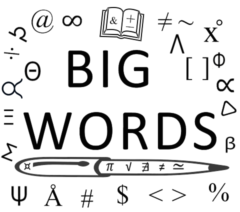The first principle of my blog is Creating Ecosystems of Success and a key focus is Career Discussions. Some careers allow working remotely which is a very helpful option to have. There are several considerations for this privilege which can be very advantageous also be abused. The following contributed post is thus entitled, Everything You Need To Know About Working Remotely.
* * *
There are many opportunities in working remotely, so if this is something you’re thinking about implementing into your routine, it could ultimately change things for you for the better. However, there are a few things you should know first.
Yes, you can work from wherever you want as long as there is an internet connection, and you may also be supported by the great technological advances in things like collaboration tools, cloud computing, improved communication tools, and so on. However, there are drawbacks. This is a trend that isn’t slowing down anytime soon, as people are no longer content to just work inside of a cubicle – so read on and you’ll get a feel for the main benefits and drawbacks.

Benefits of Remote Work Include:
When you work remotely you can take advantage of flexible working hours. You can spend more time with your children if you have a family, and you’ll usually be able to work around your hobbies and anything else you have going on. You will need to be able to draw a clear line between your work and personal life, but if you can do that, then it will be an ideal way of life for you. There’s no dress code, and you’ll learn new skills, such as bookkeeping, management, etc. You’ll likely save money from not having to commute to a place of work, which is also better for the environment. Then there are the great tools like microsoft rds to help you get the job done to a high standard. There are also more places to complete your remote work, with coffee shops welcoming remote workers and co working spaces popping up all over the place.
The Drawbacks of Remote Working Include:
Unfortunately, remote working offers limited social interaction. This can be fine for introverted workers, but maybe not so much for those extroverted workers who enjoy some company and conversation during their working day. Meeting new people and making friends is pretty impossible, and you may get lonely or stuck in a rut. Plus, there’s usually no assistance – everything is on you. If something isn’t going right, it’s likely that you’re the one to blame. Of course there can be lots of distractions, too – you must be able to self manage if you’re going to do this successfully. The fridge is usually just a few steps away, as well as your phone, social media, and the TV. You have to be able to control yourself if you’re going to get as much work done as you can. It’s all too easy to give yourself regular breaks (which can be great if you’re actually working), and end up not getting a lot done at all. There may also be communication problems with other members of your team if you don’t have the right software.
Working remotely is certainly not for everybody, but it’s something you should probably try if you’ve been considering it as an option. Figure out solutions to the drawbacks here and you might just find that it’s a positive new direction for you.









